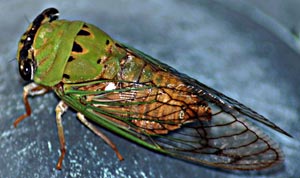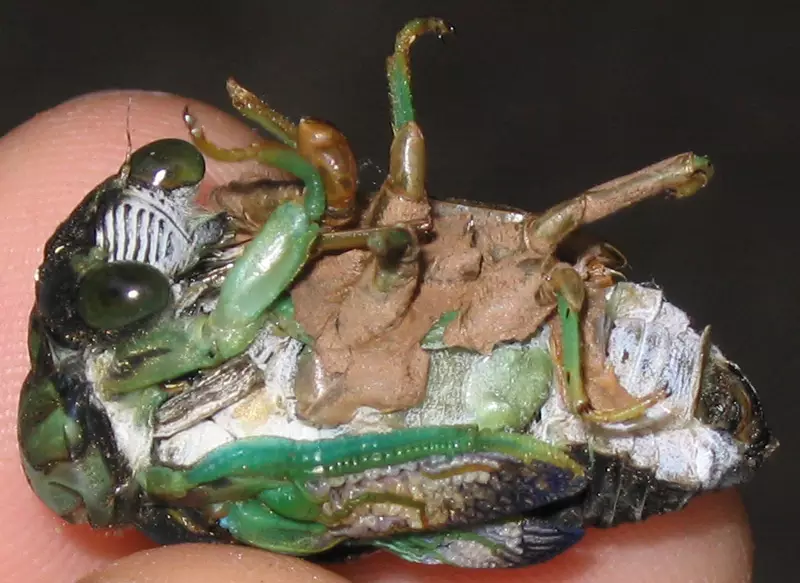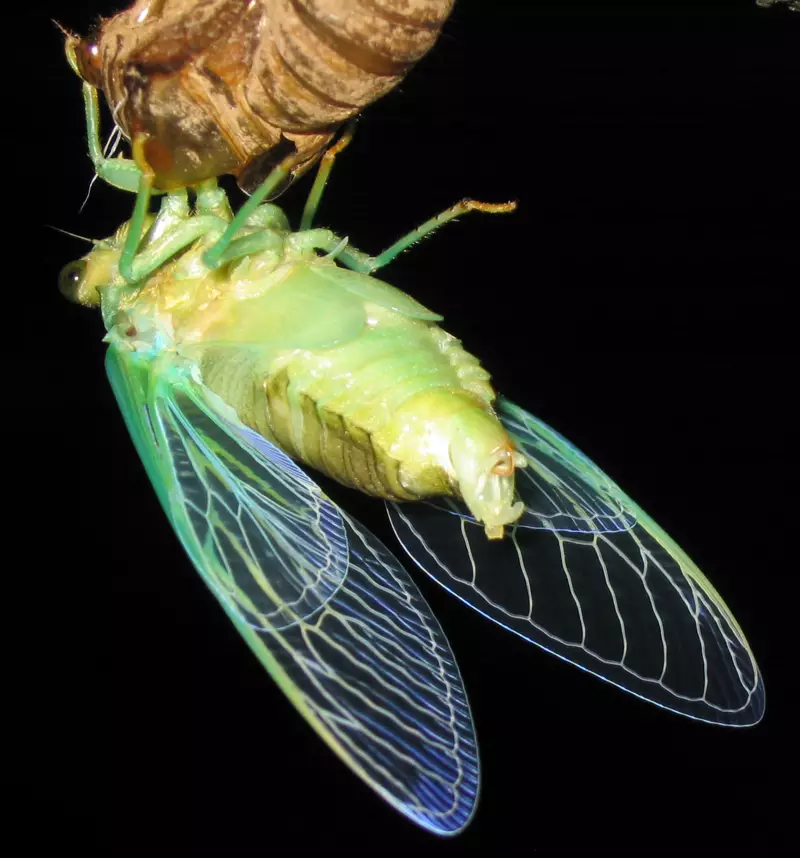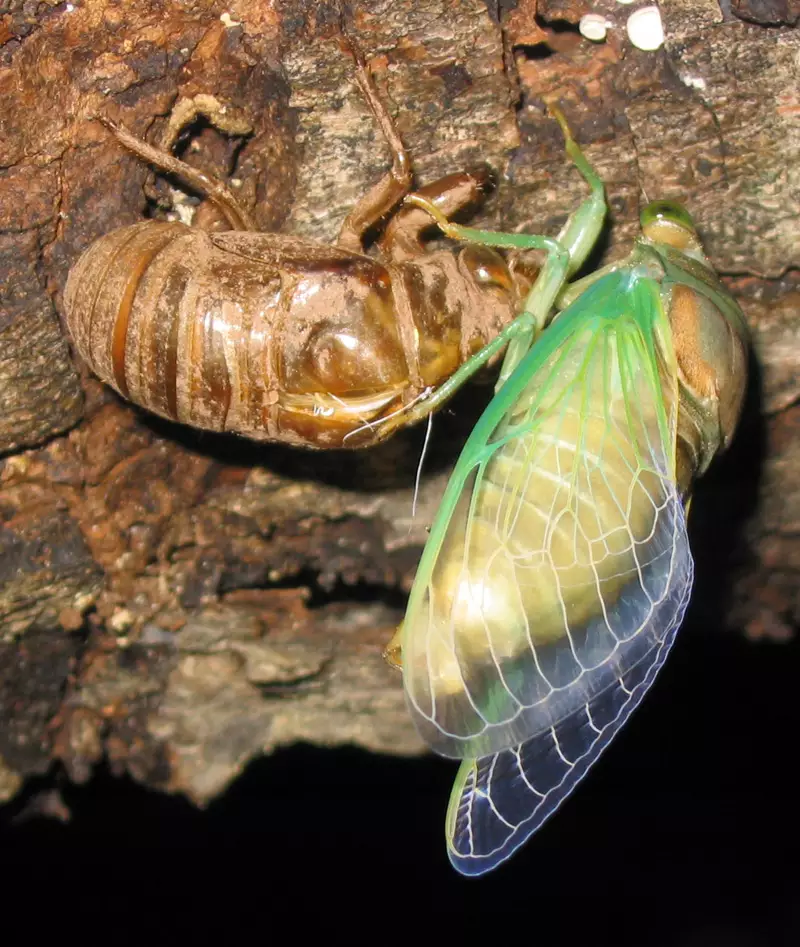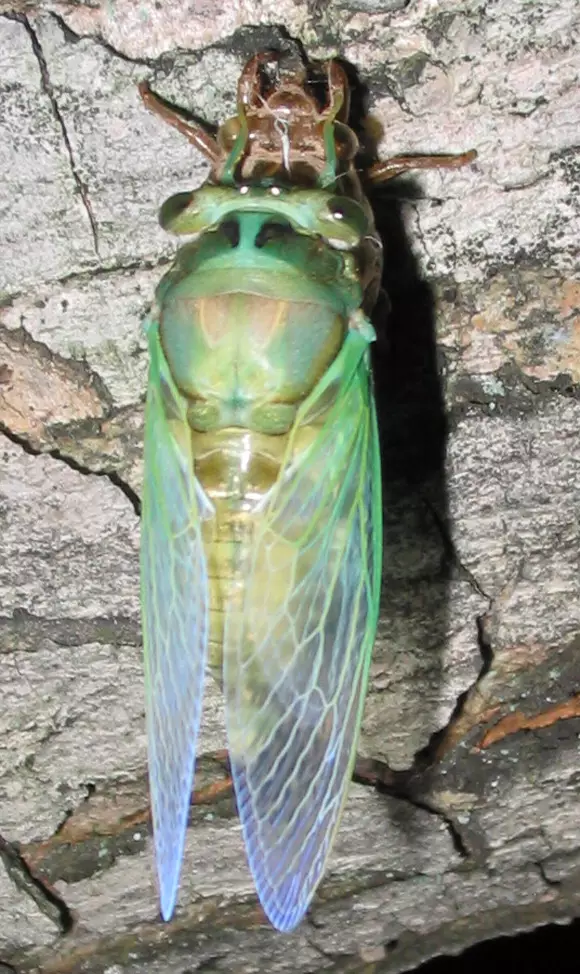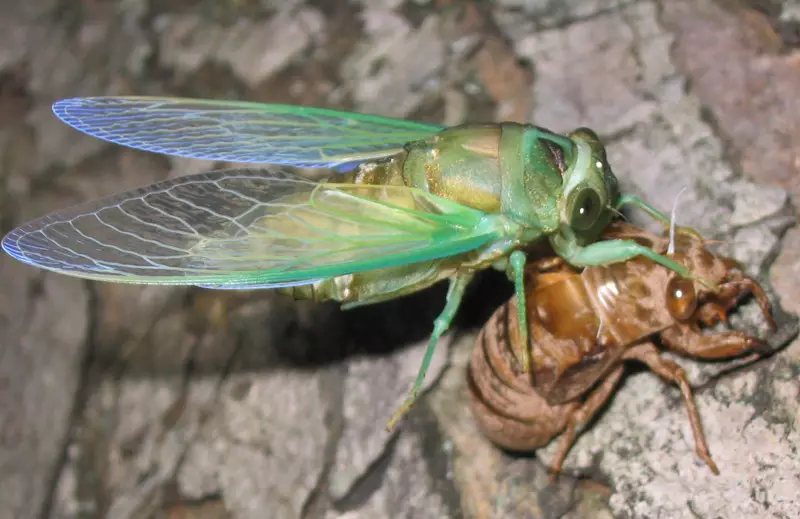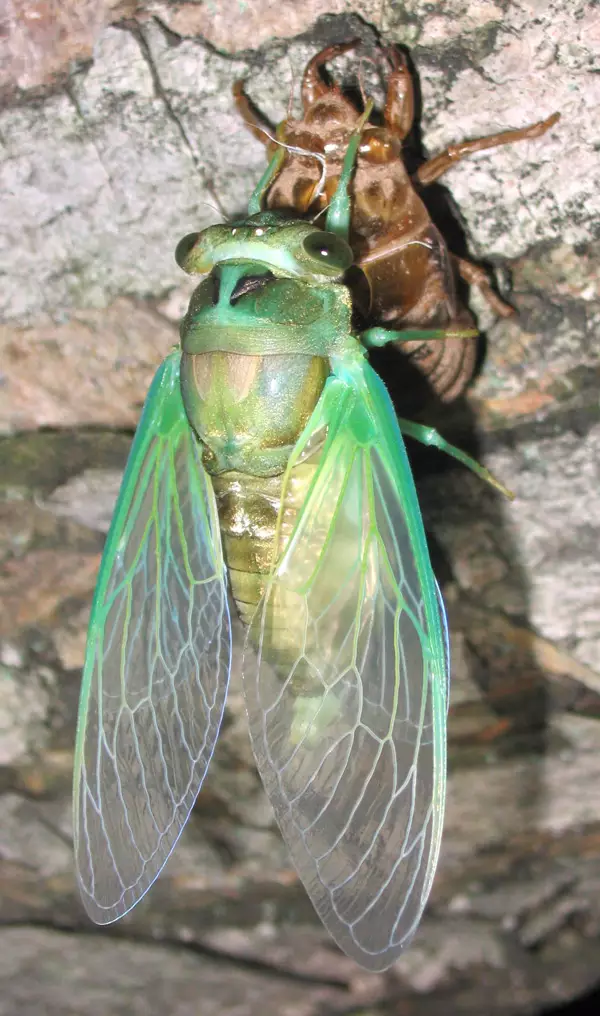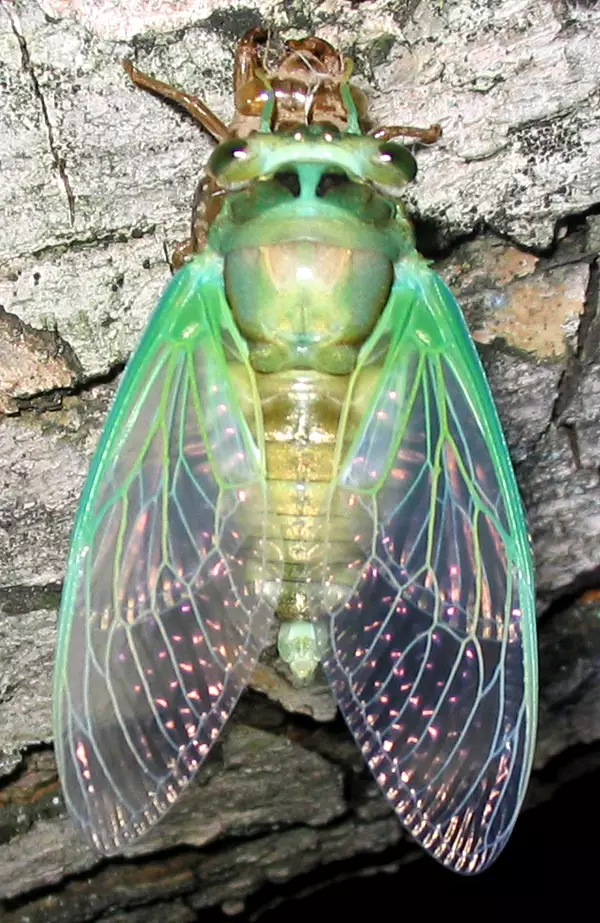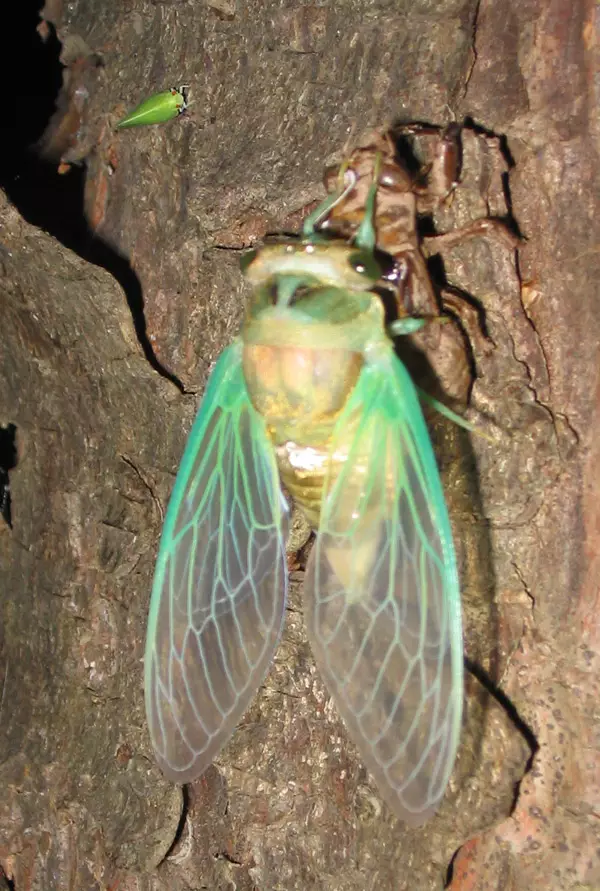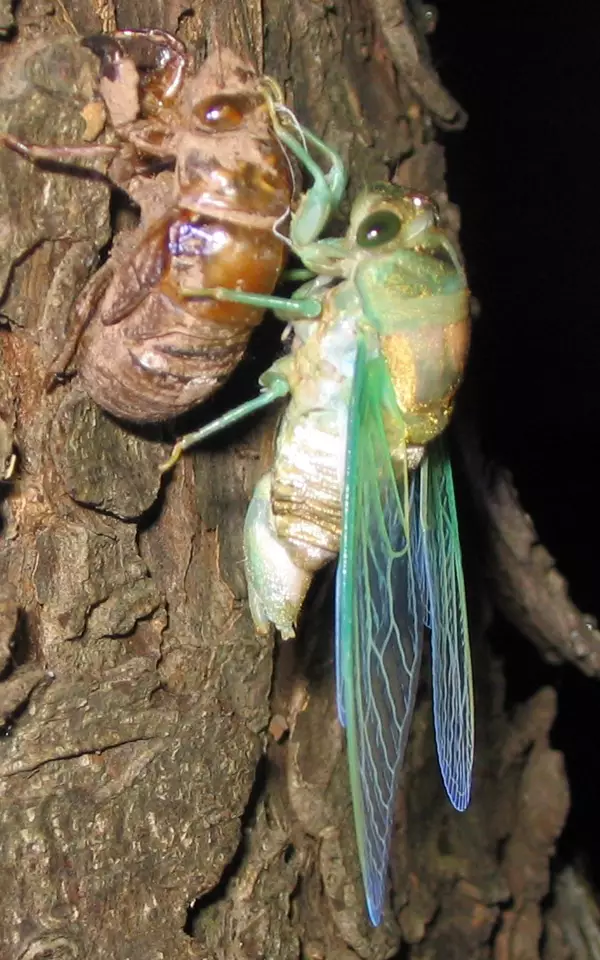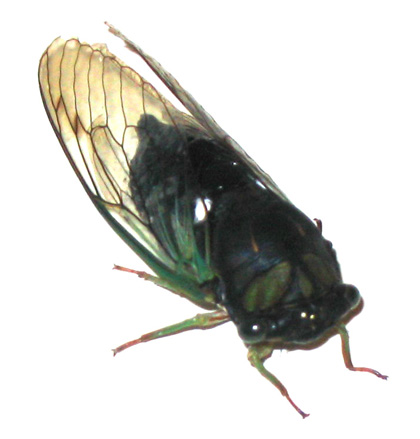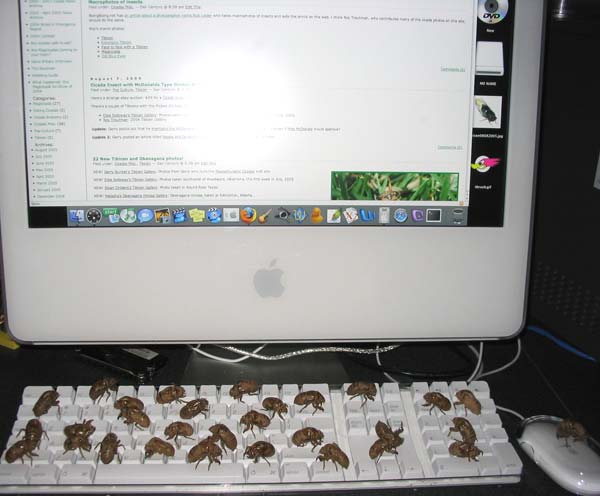 Bill from Lincoln, Nebraska sent us this awesome photo of a cicada. I’ve never seen a cicada quite like this one. It’s as pretty as a butterfly. My guess is it belongs to the genus Diceroprocta, but I don’t know what species it is. Anyone know? If so, leave your guess in the comments section below.
Bill from Lincoln, Nebraska sent us this awesome photo of a cicada. I’ve never seen a cicada quite like this one. It’s as pretty as a butterfly. My guess is it belongs to the genus Diceroprocta, but I don’t know what species it is. Anyone know? If so, leave your guess in the comments section below.
Tim McNary wrote:
The cicada you pictured is either Tibicen dealbatus or Tibicen dorsatus. It’s kind of hard to tell from a picture. If you found it in trees in town, it is probably T. dealbatus. If you found in grassy sandhills and the pronotum in swollen in profile it is probably T. dorsatus. The characture that Davis uses, the shape of the uncus, is actually unreliable.
David and Gerry said it was a Tibicen dorsatus (formerly T. dorsata).


